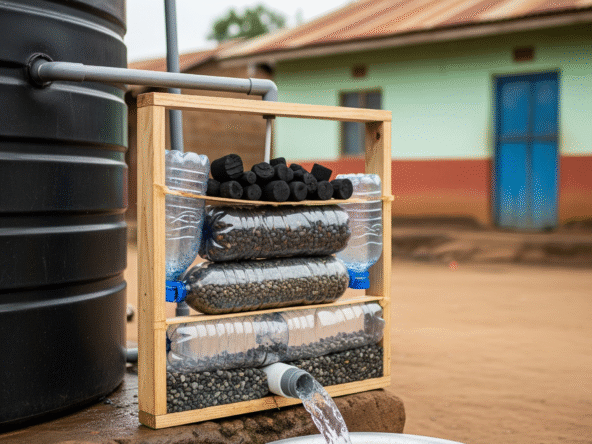In Kenya’s rental compounds, off-grid homes, and borehole-fed estates, tank overflow is more than just a minor inconvenience—it’s a source of water loss, property damage, and tenant frustration. Integrating solar-powered overflow control systems ensures that even when no one is monitoring the tank, water flow is managed effectively.
This article explores affordable, scalable options for managing tank overflow using solar energy particularly in off-grid and multi-user setups.
Why Overflow Management Matters
Without a monitoring system in place, overflow from tanks especially those like 5,000L Kentanks can lead to:
- Structural damage near tank bases or walls
- Mosquito breeding and standing water around the compound
- Tenant complaints and unnecessary plumbing maintenance
- Wastage of pumped or purchased water
For landlords with centralized water tank systems, managing overflow is not just smart it’s essential.
What Makes a Solar Overflow System Work?
A solar-powered overflow management setup typically includes the following components:
| Component | Role |
|---|---|
| Float switch | Senses when tank is full |
| Solar charge controller | Disconnects power to pump upon full detection |
| Battery | Stores energy for night or cloudy-day use |
| Overflow alarm | Sounds warning if the system fails or floods begin |
| Shutoff valve (optional) | Manual or automated final fail-safe |
When paired with emergency shutoff switches, these systems provide end-to-end automation.
Simple System Flow
Solar Panel → Controller → Battery → Pump → Tank → Float Switch → Power Cutoff
As the tank fills, the float switch triggers the controller to cut off the pump’s power, preventing overflow. This system integrates well with gravity-fed tank setups, where minimal pressure loss ensures uninterrupted supply.
What If the System Fails? Add Backup Measures
Solar systems need redundancy to avoid waste if components malfunction. Add:
- Overflow piping to redirect excess water (design ideas here)
- Drainage trenches or soak pits (see how to build one)
- Greywater reuse tanks to store overflow for gardens or toilets (guide here)
These help conserve water and protect infrastructure, even if automation fails.
Installation Tips for Best Performance
- Mount float switches at the 95% tank fill level for timely shutoff
- Protect controllers and wiring with weatherproof enclosures
- Combine float triggers with overflow alarms for layered security
- Run a manual test monthly to verify system responsiveness
Where This System Works Best
Solar-powered overflow control is ideal for:
- Off-grid compounds using boreholes and solar pumps
- Multi-unit rentals where tank access is limited or shared
- Remote homes with no KPLC backup
- Daylight-only pumping setups that operate while unattended
Paired with automated refill setups, this approach provides complete water handling automation.
With Kenya’s shifting weather patterns and frequent power cuts, protecting every drop of water matters. Solar-powered overflow control systems help landlords, homeowners, and farm managers eliminate waste, prevent structural damage, and keep compounds dry and tenant-friendly.
Combined with well-laid overflow piping, greywater capture, and top-rated tanks, this system pays for itself in savings, peace of mind, and fewer repairs.
More Practical Guides:


